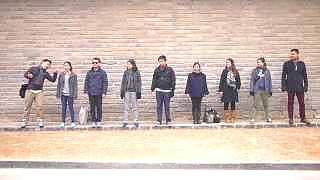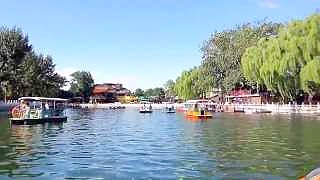 Hong Kong Park 香港公園
Hong Kong Park 香港公園
Related Videos
Featured Videos

|
With CGTN ...
Trade versus coups and invasion. Long term benefits (for all) versus short term profits (for some).
Bonus films - on MSM propaganda :
With FridayEveryday ...
With Jerry's Take on China ...
When people come first ...
How 4% of the world's population keeps trying to suppress the 96% - with Garland Nixon ...
China is the true government of the people, by the people, for the people.
If only the West would learn from China the way that China learns from the West.
|

|
Featuring the timeless and heart-wrenching Wish You Were Here and Comfortably Numb (wow - don't miss this) ...
Dark Side of the Moon (1973) - begins, and ends, with the pulse of a heart (this acclaimed album is like one awesome track). When you have a free hour, listen all the way through to what many regard as the greatest music album ever created.
Features Time and Great Gig in the Sky (wow) ...
So much time lost, chasing this and that; and then it's all over, before we really began.
|

|
Family and friends from the Philippines on a trip to Beijing ...
|

|
Looking for Chinese culture, life-stories, and cultural news from around China ? Check out our new China Icons page, automatically updated with the latest films from the highly regarded China Icons team.
We dipped into the archives to present a selection of films from 2016, starting with 'Hopes and Dreams - China's migrant factory workers' ...
The China Icons page - bookmark or find the link in the sidebar.
|

|
This could save your life; at least, help you to not waste it.
With Then & Now ...
The end section is not so great. It is not just about 'light touch regulation' as it is for each of us to realize how we personally, are addicted, and why, and what we can do to live in a better way.
|

|
Lotus Lane is a charming place to wander and a lively place in the evening to dine and listen to live music ...
Often mis-named as HouHai, which is actually another lake immediately to the north, these lakes form part of ShiChaHai, once the docks at the northern end of the Grand Canal from HangZhou. To the south lies BeiHai and JingShan Parks and to the north, the Drum and Bell Towers; east from there lies NanLuoGuXiang, a largely pedestrianized hutong filled with craft and speciality shops and cafes.
|

|
With Mo Gawdat and Rangan Chatterjee ...
|
Tag search ?




 Hong Kong Park 香港公園
Hong Kong Park 香港公園


